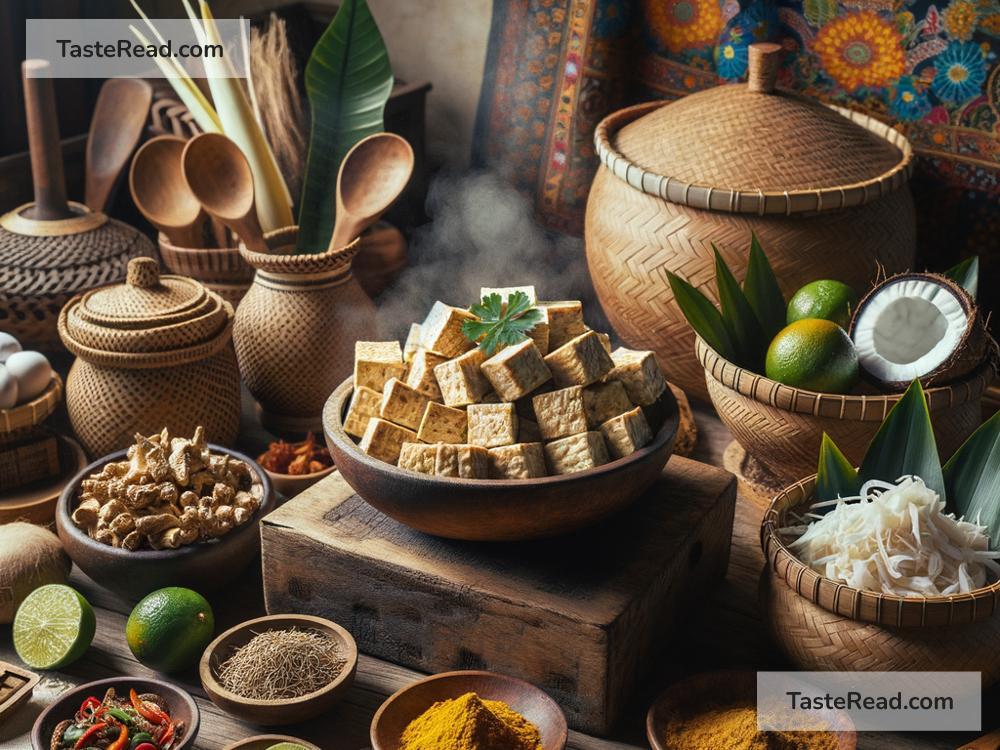Journeying through Time-Honored Tempeh Recipes in Indonesia
Indonesia is famous for its rich culinary heritage, and one ingredient that stands out is tempeh. Tempeh is a beloved food in this Southeast Asian country, cherished for its nutrition and versatility. It is a traditional soy product, made by fermenting soybeans with a natural fungus called Rhizopus. This fermentation process transforms the humble soybean into a dense, nutty-tasting cake full of protein, fiber, and probiotics. For centuries, Indonesians have used tempeh in countless recipes, creating dishes that reflect the country’s traditions, culture, and love for flavorful food.
Let us journey through some of Indonesia’s time-honored tempeh dishes, exploring the history, preparation, and why they are so loved.
The History of Tempeh: More Than Just a Food
Tempeh has roots in Indonesia, particularly in the island of Java, where it has been enjoyed for hundreds of years. Historical records suggest that tempeh became popular as early as the 17th century, made by Javanese villagers who needed a nutritious and affordable food source. Over time, it became a staple in homes across Indonesia, prized for its ability to replace meat as a source of protein.
For many Indonesians, tempeh is not just food—it symbolizes simplicity and sustainability. It is affordable, easy to produce, and highly nutritious, making it an essential part of the Indonesian diet. Tempeh is now celebrated globally for its health benefits and vegetarian-friendly nature, but its cultural significance remains strongest in its homeland.
Tempeh’s Place in Indonesian Cuisine
Tempeh takes center stage in Indonesian cooking because it pairs beautifully with spices, herbs, and sauces. Whether fried, steamed, grilled, or simmered, tempeh absorbs flavors well, making it a versatile ingredient in countless recipes.
Here are some famous Indonesian dishes featuring tempeh:
1. Tempe Goreng (Fried Tempeh)
Tempe Goreng is one of the simplest and most popular ways to enjoy tempeh. The tempeh is sliced into thin pieces, seasoned with salt and garlic, and deep-fried until golden brown. The result is crispy, salty tempeh that works perfectly as a snack, side dish, or topping for rice dishes.
Many Indonesians dip Tempe Goreng into sambal (spicy chili paste) for an added burst of flavor. It’s easy to make and loved by everyone—from street food vendors to fancy restaurants.
2. Tempe Orek (Sweet, Spicy Stir-Fried Tempeh)
Tempe Orek is a dish full of bold flavors. Tempeh is cut into small blocks, then stir-fried with kecap manis (sweet soy sauce), garlic, shallots, and chilies. The sweet and spicy sauce caramelizes the tempeh, creating a delicious dish that pairs wonderfully with steamed rice.
Tempe Orek is commonly served as part of a traditional Indonesian meal, alongside other dishes like fried chicken or vegetable soup (sayur asem). It’s perfect for lunch or dinner with family.
3. Sate Tempe (Tempeh Skewers)
Inspired by Indonesia’s famous chicken satay, Sate Tempe replaces meat with marinated tempeh cubes grilled on skewers. The tempeh is soaked in a flavorful marinade made of garlic, turmeric, coriander, and coconut milk, then grilled over charcoal for a smoky aroma. It’s served with peanut sauce and rice cakes (ketupat).
Sate Tempe is a beloved street food found in traditional markets and festivals. It’s a perfect example of how tempeh can be transformed into a dish bursting with flavor.
4. Tempeh Balado (Spicy Tempeh in Chili Sauce)
Tempeh Balado is a fiery dish that showcases Indonesia’s love for spicy food. Fried tempeh pieces are coated in sambal balado, a bright red chili sauce made with tomatoes, shallots, garlic, and chili peppers. This dish is not for the faint-hearted, but spice lovers adore it.
It’s often enjoyed with steamed rice, boiled eggs, or fried fish in a hearty Indonesian meal.
5. Sayur Lodeh with Tempeh (Vegetable Coconut Soup)
Tempeh also finds its way into soups, such as Sayur Lodeh. This comforting coconut milk soup includes vegetables like carrots, green beans, and cabbage, along with tempeh and tofu. The creamy, savory broth is spiced with garlic, shallots, galangal, and turmeric.
This wholesome dish is popular during festive occasions or casual family meals. It’s a great example of tempeh as a nutritious addition to a balanced meal.
Why Tempeh Matters
Tempeh is more than a food ingredient—it represents tradition, health, and sustainability. Many Indonesians view it as a gift of nature, offering affordable nutrition to people of all backgrounds. Today, tempeh is gaining international recognition, but Indonesians continue to feel pride in introducing such a remarkable ingredient to the world.
Tempeh also aligns with global trends in plant-based eating and eco-friendly diets. It is entirely plant-based, requires minimal resources to produce, and can be made at home by fermenting soybeans. This sustainable quality is especially important in today’s world, where people are looking for ways to eat healthily while caring for the planet.
Final Thoughts
Indonesia’s time-honored tempeh recipes are a delicious reminder of the country’s vibrant culinary traditions. From fried tempeh to spicy sambal dishes, tempeh proves its versatility in every recipe. For those looking to explore Indonesian food, tempeh is an excellent place to start—it’s nutritious, flavorful, and deeply rooted in history.
Whether you are a seasoned cook or just beginning your culinary journey, try making an Indonesian tempeh dish at home. Who knows? Tempeh might become one of your favorite ingredients, connecting you to both Indonesia’s past and its present.


